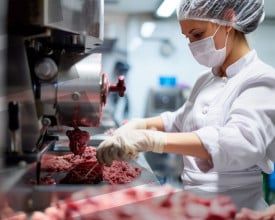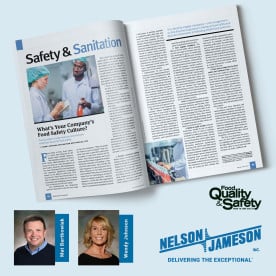Monthly Archives: July 2021
- July 28, 2021
Nelson-Jameson strives to not only be a resource of products, programs, services, and industry expertise, but to also be of service to the food industry and focus on the mutually shared goal of food safety and quality. This allows us to work with a whole host of professional organizations, academic programs, regulatory agencies, etc. Over the past several months, we have enjoyed engaging and becoming active with the Innovation Center for U.S. Dairy Food Safety Team. You may or may not be familiar with this volunteer organization, and even if you are, you may be surprised by the remarkable scope of resources available...
The Innovation Center for US Dairy is a consortium of dairy industry producers, educators, and organizations
- July 27, 2021
Ensuring the proper application and removal of lids is paramount for preserving the longevity of your buckets and lids while maintaining the secure containment of contents. Incorrectly applied lids pose a risk of product loss. The precise application of lids not only safeguards the contents from potential contamination but also plays a crucial role in preventing spills or leaks. Consistent adherence to correct application and removal procedures not only extends the lifespan of the containers but also contributes to overall operational efficiency, minimizing the likelihood of product wastage and ensuring a reliable containment system for your valuable goods.
- July 23, 2021
Ultraviolet-C (UV-C) has been a part of the food processing industry for over 50 years. The power of this unique form of light may be invisible to the human eye, but it's impact on sterilization can be felt far and wide. Unlike the costly and corrosive chemicals that are traditionally used in the sterilization process, UV-C disinfection offers an alternative that has been proven to be both effective and cost efficient to your bottom line.
- July 02, 2021
Summer is here! What a perfect opportunity to get outside and enjoy the warm summer air we've all been craving! For some individuals, spending time outdoors could involve hiking,
- July 01, 2021
Dive into precision and reliability with NIST Traceable Calibration Certificates for certified reference thermometers. Whether you choose spirit-filled glass thermometers or digital thermocouple thermometers, each device undergoes meticulous calibration and inspection at the manufacturer to align with NIST traceable reference standards. These standards, certified by an ISO/IEC 17025 accredited calibration laboratory, ensure the highest levels of accuracy. Thermco®, a trusted provider, offers popular reference thermometers calibrated at critical temperature points. Embracing good laboratory and manufacturing practices, these thermometers should be recertified annually. Explore Thermco®'s custom calibration services, facilitating direct collaboration with the manufacturer for precise temperature monitoring in laboratories and food manufacturing processes. Discover the significance of NIST's Calibration Services and the accompanying NIST Certificate of Accuracy, providing a benchmark
- July 01, 2021
Discover essential tips and tricks for effective thermometer use with Nelson-Jameson. Whether you're dealing with spirit-filled or mercury thermometers, understanding proper storage, reuniting techniques, and recertification requirements is crucial. Learn about the color variations in spirit-filled thermometers and the importance of annual recertification for certified thermometers. Stay informed about mercury regulations in your state and explore mercury-free alternatives available from Nelson-Jameson. In case of a mercury-filled thermometer break, ensure safe cleanup with a mercury spill kit and report the incident to Nelson-Jameson for proper disposal guidance. Delve into the concept of thermometer immersion and gain valuable insights into using infrared thermometers, including tips on maintaining accuracy by keeping the lens clean and avoiding prolonged storage in cold environments. Elevate your temperature monitoring practices with Nelson-Jameson's comprehensive thermometer tips and
- July 01, 2021
Meet regulatory requirements with accurate temperature readings. Accurate and reliable temperature monitoring is a crucial aspect for the food and dairy industries. Now more than ever, regulatory compliance is of the utmost importance, and having the exact thermometer for your intended application will be the key to success and accountability.
With a variety of monitoring options available, temperature instrumentation is more flexible today than ever before.
With that in mind, Nelson-Jameson has developed a Temperature Monitoring Program, featuring products and information to help you meet regulatory requirements with accurate temperature readings in any application.Below you will find everything from dial and digital thermometers to chart recorders and data loggers to help ensure your food stays safe.
For more information on Thermometers, visit our Learning





